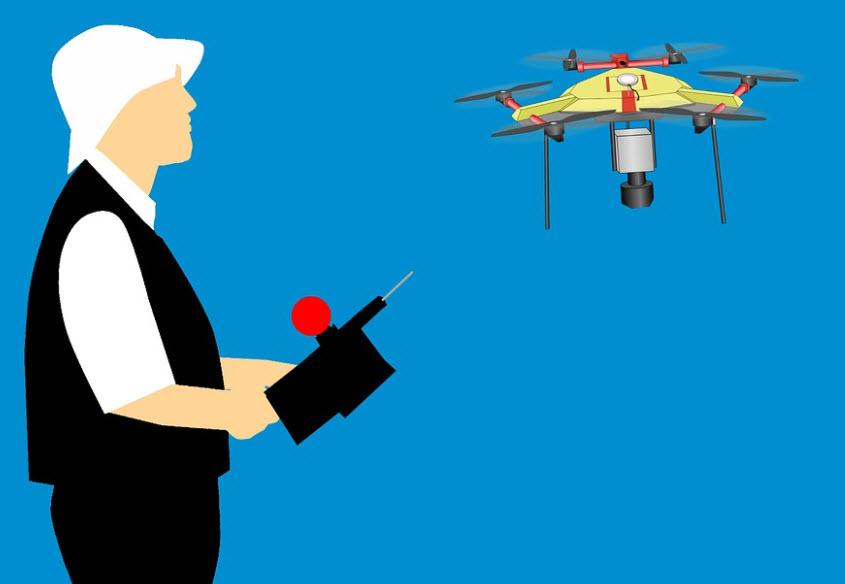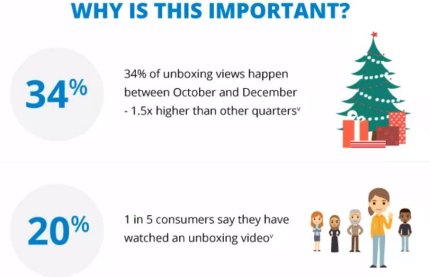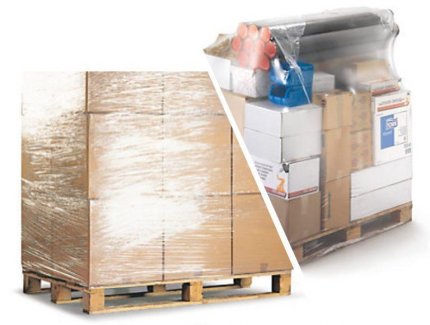With Amazon’s parcel drone demo still fresh in our minds, Rajapack gets some expert views on whether delivery by automatic drone is really as close as we think.
Back in December a small robotic delivery-copter flew out from a product depot with a parcel strapped to it and headed to its destination; it then carefully placed the package down on to the patio of an eager customer who was waiting a few miles away. There was no knock on the door, no slip of paper saying “sorry, we missed you”, and no van waiting outside with the engine still running. There was very little human involvement at all.
The automatic parcel drone in question had “Amazon Prime Air” written on the side – it was a recent demonstration by the online giant showcasing their game-changing drones (or “Octocopters”) that fly directly to a customer’s home to deliver a package in thirty minutes of the order being placed.
Amazon’s Chief Executive Jeff Bezos says that the drones can carry items of around 5lbs (which accounts for most of the products bought on Amazon) and insists that they will be able to deliver those parcels in the promised half hour.
It’s bold and it’s impressive, but is it the first step towards a world in which endless Octocopters sail overhead while you’re doing the shopping? Could the flying robots soon be as commonplace as other technological paradigm shifts, such as the UK’s giant web of power lines that dominate the countryside? Well, it might not be that simple – there are a number of challenges to face before this idea really inserts itself in to the normal running of society.
Before any technological, logistical or even human factors are taken into account, the first hurdle to jump (like with many of these things) is a bureaucratic one. Numerous restrictions currently limit the use of an Unmanned Aircraft System (UAS) such as this in national airspace, but these regulations vary from country to country. In the US, for example, drone use is restricted to more governmental applications, while in Australia drones are allowed for commercial use.
On top of this there are clear safety concerns, from the obvious ones like “what if the drone flies into me”, to the more aviation specific problems such as mid-air collisions. With regards to this, the UK’s Civil Aviation Authority states that any UAS is currently subject to similar safety regulations as a manned aircraft – these, as you can imagine, are strict; but with commercial drones potentially around the corner, these rules may well be revised.
So once the paperwork is filled out and all safety checks are done, the question remains as to whether this idea is even viable for use in the delivery sector. Just how realistic is it that Amazon will employ a system of parcel drones in their daily operations?
To find out, Rajapack spoke to a few experts on the subject to see what the future might hold:
The Technology
Looking to see what technological issues may face the introduction of the Octocopters, we had a chat with Dr. Arthur Richards, who specializes in autonomous drones:
Dr. Arthur Richards – Senior lecturer in Dynamics & Control at the University of Bristol and member of the Bristol Robotics Laboratory
Q: Do you think that drone use for delivery is something that is likely to be seen in the near future? If so, how long do you think it will be until drones are widely used?
A: Yes. Within five years, urgent deliveries in remote locations could well use drones, e.g. for medicines or disaster relief in developing countries. Routine deliveries in dense urban areas are further off – ten years maybe.
Q: What are the technological challenges facing the introduction of drones to this sector? What challenges will the drones themselves face during delivery?
A: The drones will need to handle wind, rain, snow, ice, curious birds or even ambitious thieves. Solutions to many of those challenges exist in the lab, but integrating them into one robust product won’t be easy or cheap. Proving the safety of that integrated system will be extremely tough. Scaling the capability up to large numbers will be even tougher.
Q: Do you think this is a waste or a misuse of this type of technology, or are drones perfect for it?
A: No, not a waste at all. For some deliveries, a drone really will be the best solution. Much will depend on costs: short range urban jobs might still be better done by cycle courier, for example.
Q: In your opinion, do you think Amazon’s demonstration was a just publicity stunt?
A: The demonstration hasn’t solved any of the big technical problems, so its immediate value is just publicity. Longer term though, the demonstration has got more people thinking about the commercial possibilities of this technology. It’s bound to happen anyway and this ‘stunt’ will have brought it a little bit closer.
The Logistics
On the other side of the coin, there are logistical issues to take into account. To tell us more, we spoke to Senior Lecturer John Heathcote, Professor Michael Bourlakis, and Dr. Ilias Vlachos, who all specialize in logistics and supply chain management:
John Heathcote – Course Leader of MSc Strategic Project Management in Leeds Metropolitan University’s Built Environment and Engineering Department
Q: Do you think the Amazon drone demonstration was purely a publicity stunt, or do you think Amazon will be looking to actually use drones in the future?
A: As with many ‘prototype’ ideas much will depend on the reaction to the market and regulators to this.
In that respect we can expect an enthusiasm from early adopters for an exciting technology and concerns about the risk perceptions that may arise in others. It’s important to prepare ourselves for the risk debate being less about the actual risk (helicopters fly our city skies and occasionally drop from them to tragic effect), but what seems to matter most is how the risk is perceived. Drones have the added misfortune of being not in the immediate control of a morally motivated human.
So it may become a publicity stunt (I think this is most likely) but a more positive reaction may see Amazon seek to operationalise the expectation they’ve potentially created.
Q: Do you think that drone use for delivery is something that is likely to be seen in the near future? If so, how long do you think it will be until drones are widely used?
A: There’s some practical limitations regarding range. There’s also I imagine a weather limitation. And there’s a local over fly regulation to negotiate. So I don’t think it’ll be something that happens soon. And less so for those furthest from distribution centres.
The indicator of wide adoption I’d look for is the start up of subcontractors and logistic specialists offering this. From a service point of view I imagine people on bicycles can achieve something similar once the service costs are factored in.
Q: What are the logistical challenges facing the introduction of drone use? What challenges will the drones themselves face during delivery?
A: It potentially creates a cost that couldn’t be funded in the distribution centre, as those orders would need to be treated separately.
Public risk perception (I’m sure the technical challenges can be overcome, power lines, parked cars, etc) by perceived risk of the customer/public group would be the deciding factor. That’d put me off, if I was Amazon, from taking the risk until the tech had been explored by others closer to Government.
Professor Michael Bourlakis – Professor in Logistics & Supply Chain Management at Cranfield University and Head of the Supply Chain Research Centre
Q: Do you think the Amazon drone demonstration was purely a publicity stunt?
A: Probably not. Amazon seems to be looking to that delivery option and may be a realistic possibility.
Q: Do you think that drone use for delivery is something that is likely to be seen everywhere in the future? If so, how long do you think it will be until drones are widely used?
A: Depending on obtaining the right permissions and investing in the appropriate infrastructure, we may be looking a wider use in the next 10 years or so.
Q: What are the logistical challenges facing the introduction of drone use? What challenges will the drones themselves face during delivery?
A: Many challenges for sure. It may be difficult to transport heavy, bulky and/or sensitive items. It may be difficult to ensure delivery in busy city locations to name a few, plus the danger of having drones flying in highly populated areas.
Dr. Ilias Vlachos – Reader in Logistics and Supply Chain Management at Northumbria University
Q: Do you think the Amazon drone demonstration was purely a publicity stunt, or do you think Amazon will be looking to actually use drones in the future?
A: Amazon claims that the technology will be ready by 2015, when for FAA’s rules would be in place. Drones are already used in military operations and from a technological point of view they can be used for commercial applications. However, unmanned commercial aviation needs to overcome significant barriers such as public safety and last-mile problems.
Q: Do you think that drone use for delivery is something that is likely to be seen in the near future? If so, how long do you think it will be until drones are widely used?
A: Drone commercial use will need at least a period of five years to solve operational and logistics problems. Although some pilot programs could be established with cities and regions, widespread diffusion of drones could take more than a decade since their first flight.
Q: What are the logistical challenges facing the introduction of drone use? What challenges will the drones themselves face during delivery?
A: There are many challenges for Amazon and e-commerce companies in general. First, Amazon’s distribution centres are too far away from metropolitan areas to make drone deliveries efficient. Amazon would need to design their supply chain design based on this new technology. The routing engine needs to integrate single-item delivery with the web store but this shouldn’t be a big problem. Another challenge is that on the way back to the warehouse drones would be empty and thus inefficient.
The Boxes
To get the packaging perspective on things, we went in house and had a chat with our eCommerce Manager Andrew Wood and our Senior Buyer Hector Au:
Q: What do you think the Amazon drone demonstration means for the future of the packaging supply chain?
Hector: Could be a game changer, more direct deliveries to customer with scope for lots of convenience. Flying into people aside, it could be a great tool. It may help the supply chain be more efficient in fulfilling orders along with the local pickup points they operate already. On the other hand, it could have a detrimental effect on 3rd party delivery companies.
Andrew: I would also question how scalable this this is as a deliverable solution, as mini aircraft are picked up flying around our airspace.
Q: In your opinion, is Amazon heading in the right direction in terms of delivery innovation? Are they being too ambitious?
Hector: I think they are heading in the right direction, as one would need to be ambitious in order to succeed in this world and in my opinion not innovating is virtually going backwards.
Andrew: There is obviously a need for a low cost, environmentally friendly delivery solution in the future as an alternative to a large team of delivery vans.
Q: Do you believe this was just a gimmick to draw press attention to Amazon?
Hector: No, I wouldn’t say so. Jeff Bezos’ track record would say otherwise; this could possibly become a reality somewhere down the line.
Andrew: There’s no way round the fact that this is quirky and enough a story to get journalists to write about it, and it keeps Amazon at the forefront of your mind when making your next online purchase.
Conclusions
So where does this leave us? Plenty of people assumed that the drone delivery was just a gimmick, an attention grabber; others saw it and immediately predicted that the idea would never take off (not literally) and would encounter too many difficulties to ever be worthwhile. But maybe these judgements were hasty. As our experts told us above, a development like drone delivery might not be as radical as you might think, despite the likelihood of a few early roadblocks. Maybe this isn’t something we’ll see in the next couple of years, but given enough time it seems possible that parcel drones will be widely used in package distribution. Brace yourself for the dawn of the Octocopters.
Image: Trusted Reviews























